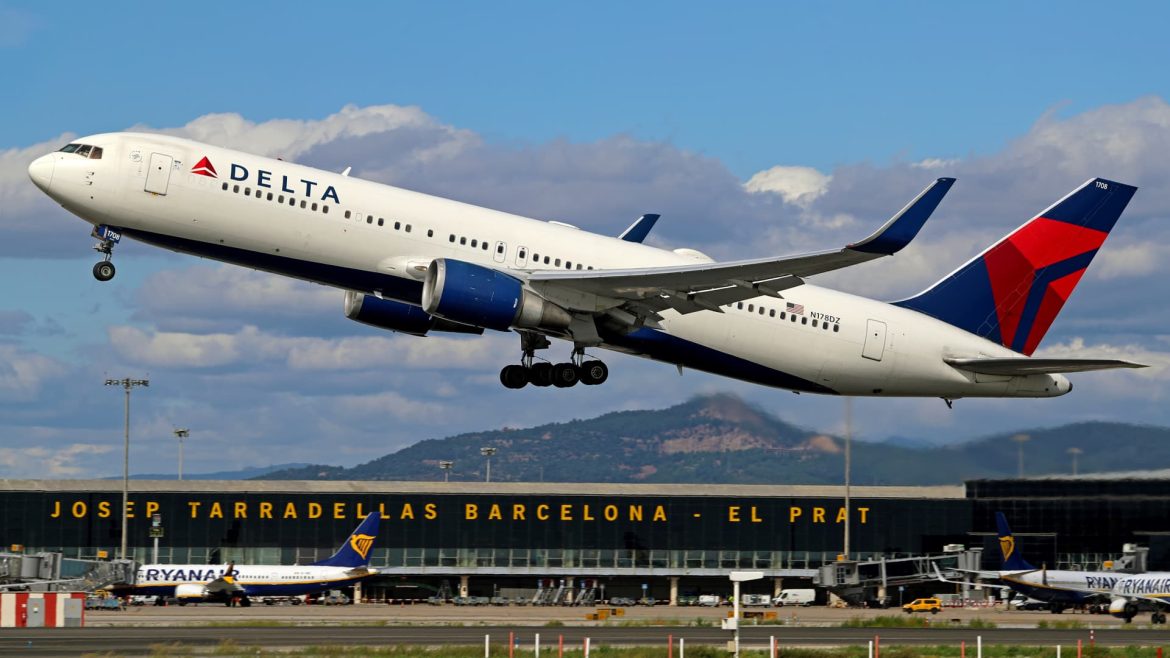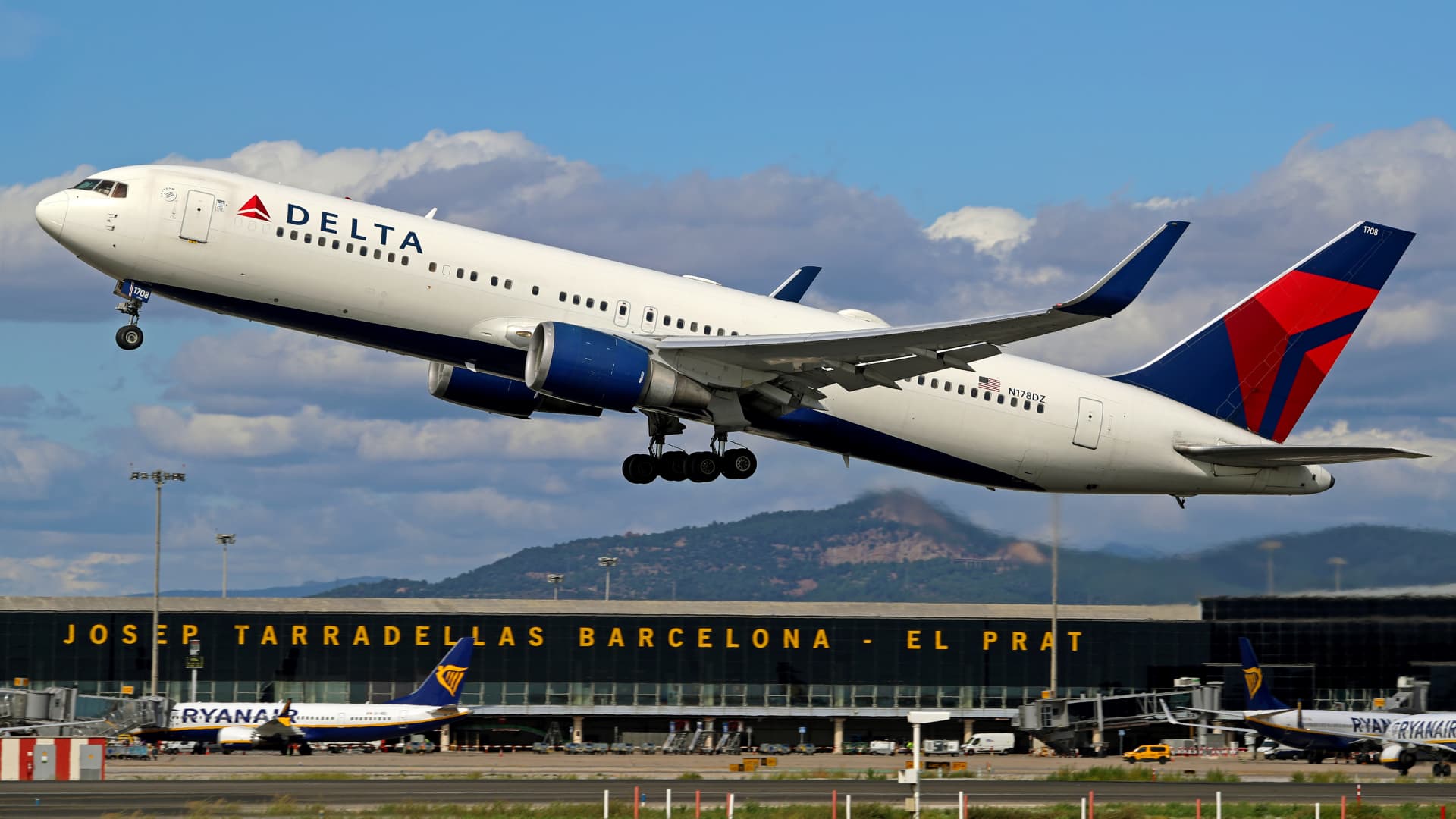Delta Air Lines in 2025: A Year of Turbulence and Resilience
The aviation industry has long been a barometer for global economic health, and 2025 proved to be a particularly volatile year for Delta Air Lines. Entering the year with cautious optimism, the Atlanta-based carrier quickly found itself navigating a perfect storm of economic headwinds that tested its operational resilience and strategic agility. From macroeconomic uncertainties to geopolitical tensions, Delta faced significant challenges that required swift and decisive action. Yet, through a combination of prudent capacity management, disciplined cost control, and revenue diversification, the airline demonstrated remarkable adaptability in the face of adversity.
The year began with Delta projecting strong performance, building on the momentum from previous years. However, this optimism was short-lived as several converging factors began to weigh heavily on the airline’s operations. Macroeconomic uncertainty, particularly surrounding global trade, created a ripple effect that dampened consumer and corporate travel demand. The ongoing trade disputes, especially those involving U.S. tariffs, had a direct impact on Delta’s business model. CEO Ed Bastian explicitly acknowledged that these tariffs were hurting bookings, leading the airline to withdraw its initial financial forecast for the year. This was a significant development, as it signaled the severity of the challenges Delta was facing.
The initial impact of these factors was substantial. Delta was forced to cut its profit expectations for the first quarter of 2025 by roughly half, a clear indication of the severity of the challenges it faced. The airline’s initial full-year 2025 adjusted earnings forecast of more than $7.35 a share was revised down to between $5.25 and $6.25. This downward revision reflected the broader economic slowdown and the need for strategic adjustments to align with the new reality.
In response to the deteriorating economic environment, Delta Air Lines implemented a series of strategic measures aimed at mitigating the impact of weakened demand. Recognizing the need to align supply with demand, Delta announced capacity cuts, reducing the number of flights and available seats in certain markets. This move was designed to boost pricing power in the second half of the year. Alongside capacity adjustments, Delta focused on rigorous cost control, streamlining operations, improving efficiency, and managing expenses more effectively. Additionally, the airline continued to emphasize its diversified revenue streams, including premium travel and ancillary services, which helped to offset some of the pressure from reduced passenger demand.
These actions were critical in helping Delta navigate the challenging environment. By proactively adjusting its capacity and cost structure, the airline aimed to protect its margins and maintain healthy cash flow. The second quarter of 2025 provided a mixed bag of results, reflecting the broader economic environment’s uncertainty. While Delta reported record June quarter revenue of $15.5 billion, approximately 1 percent higher than the prior year, analysts projected a decline in Q2 EPS of 16.5% year-over-year. This discrepancy highlighted the complex dynamics at play, with leisure travel remaining relatively resilient while business travel showed signs of weakness.
Despite the challenging environment, Delta exceeded summer travel expectations, indicating that leisure travel remained relatively resilient. Bookings had stabilized at lower levels, suggesting that consumers were still willing to travel, albeit with more caution. However, the airline lowered its 2025 profit forecast due to reduced demand, acknowledging that economic headwinds were continuing to impact its financial performance. The Q2 results underscored the importance of Delta’s strategic adjustments. By maintaining a diversified revenue base and implementing cost control measures, the airline was able to achieve better-than-expected results despite the challenging environment.
As the year progressed, there were signs of improvement. Delta reinstated its 2025 profit target, signaling a rebound in demand and increased confidence in its ability to navigate the economic landscape. The airline projected adjusted third-quarter earnings of $1.25 to $1.75 a share, compared with the $1.33 expected by analysts on average. This positive outlook was driven by several factors, including stabilized travel demand, effective capacity management, and strong premium travel performance. Industry executives noted that travel demand had stabilized, providing a more predictable environment for airlines. Delta’s capacity cuts had begun to take effect, helping to boost pricing power and improve revenue per available seat mile (RASM). Additionally, demand for premium travel remained relatively strong, contributing to Delta’s overall revenue performance.
Despite the positive momentum in the third quarter, Delta Air Lines continued to face significant challenges. The ongoing trade tensions and economic uncertainty remained a concern, and the airline had to navigate a complex and evolving business environment. One specific challenge was the impact of tariffs on aircraft imports. Delta took a strong stance against these tariffs, even considering deferring deliveries of Airbus planes if necessary. This demonstrated the airline’s commitment to protecting its financial interests and mitigating the negative effects of trade disputes. Furthermore, the airline acknowledged that the broader economic outlook remained uncertain, making it difficult to provide precise financial forecasts. This cautious approach reflected the reality that the airline industry is inherently cyclical and susceptible to external shocks.
As Delta Air Lines looks beyond 2025, it is clear that the airline must continue to adapt and innovate to succeed in a dynamic and competitive industry. Some key strategies for long-term success include maintaining a strong focus on cost efficiency, enhancing the customer experience, expanding strategic partnerships, and embracing innovation. By continuing to prioritize these areas, Delta can position itself for sustained growth and resilience in the face of future challenges. The airline’s performance in 2025 serves as a testament to its ability to navigate turbulence and emerge stronger, setting the stage for continued success in the years ahead.





